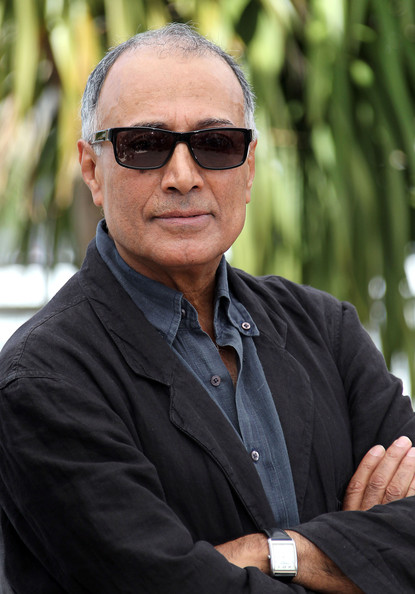December 25, 2015

Attending the Marrakech Film Festival to conduct a masterclass, 75-year old filmmaker Abbas Kiaros-tami unveiled his latest project, which is a compilation of 24 four-and-a-half minute films that he has been directing over the last three years and aims to release in mid-2016.
During the masterclass, Kiarostami screened two of the shorts, in their first-ever appearance before an audience. Each film is a fixed tableau, based on five paintings and 19 photographs. Through the use of blue-screening techniques, the tableaux come to life, thus introducing the dimension of time into the original still image.
The film is titled “24 Frames Before and After Lumiere.”
Kiarostami explained that one of the inspirations for the project was his own dream to become a painter as a young man, which he says he failed to achieve through a lack of talent.
For the project, he revisits still images and introduces elements that could have been present at the time or which he introduces in order to give new meaning. He considers that embracing digital technology, which lies at the heart of the work, is perfectly natural since all films are essentially illusions or artefacts and that new digital tools expand the filmmaker’s palette
The first short screened during the masterclass is based on Jean-Francois Millet’s 1857 painting “The Gleaners,” which shows three peasant women picking wheat grains during the harvest. Kiarostami said he chose this painting to start his project because it was one of the first paintings he ever saw and, at the age of 16, he tried to copy it.
“I wanted to show what the painters heard and saw at the time, but couldn’t express through their work.”
This pre-industrial scene slowly comes to life during the film, through the addition of natural sounds and the intrusion of successive animals, commencing with birds and horses on the distant horizon, followed by a line of cows, crows, a dog that weaves its way through the women and finally horses that parade past in the foreground. At the end, we notice subtle reactions from the three women as they turn their heads to observe the movements around them.
In the second short screened at Marrakech, a photograph of an abandoned semi-industrial landscape appears in the foreground, with three concrete columns and a wire fence. In the background. We hear and see an empty beach and the sea, with a boat rocking in the water. As the still image comes to life, we see ducks walking along the coast in the background and a male duck in the foreground separated from the rest by the fence. A female duck waddles toward the fence, to no avail, and then waddles away.
Kiarostami says the tableaux have no concrete meaning and are open to the interpretations of the audience.
During the masterclass, he stated that the audience often sees things in his films that he himself has been unware of. For the shorts, Kiarostami shot much of the introduced imagery at his home in Iran, either inside his house or on the rooftop terrace. Each short required at least six weeks of full-time work; 18 of the 24 short films have been completed to date.
Kiarostami is also prepping his next feature film, “Walking with the Wind,” which he hopes to begin shooting in China next May.
He has cast the lead Iranian actress and the main Chinese actors for the project, but prefers not to disclose further details at present.
His forthcoming project in China follows in the wake of Kiarostami’s previous experience shooting “Certified Copy” in Italy and “Like Someone in Love” in Japan, which he says were motivated by the desire to experience different places and eras and “see what happens.”
“The world has interacted with my Iranian films via subtitles, so I wanted to make films that I would interact with via subtitles. When they recently dubbed ‘Certified Copy’ into Persian, I suddenly realized what my actors had been saying.”
He says that when filming abroad the only promise he makes to his producer is to avoid committing cultural gaffes; he hopes to uphold this rule in his upcoming shoot in China. “In Iran, I’m viewed as a Westernized filmmaker, which was reinforced by the fact of having shot ‘Certified Copy’ in Italy. It was therefore important for me to make films in the Far East in order to achieve some balance. I have my feet in Iran and my eyes look both ways.”
In early 2016, he will hold a 10-day workshop in Cuba, where he will work with students in the production of short films, also becoming involved in the directing process himself. He has also been active in other fields, conducting research work on ancient and modern Persian poetry, writing two-to-three novels a year, and last month opened his “Doors Without Keys” photography exhibition at the Aga Khan Museum in Toronto.
“Some people may think that I want to be everywhere, doing everything. But the truth is that I have a lifelong restlessness. I only sleep four hours a night, and so I have to keep busy. During the daytime, I can film or take photos. At night, it’s dark and the only thing left is to write fiction or poetry.”
Questioned whether he finds it difficult to work within the tight rules governing cinema production in Iran, he countered that he believes there are many misconceptions about Iran, for example, that although in official terms men and women can’t mix in many social contexts, in practice he believes that social life is not so different from any other country.
In terms of filmmaking, he says, “Whenever there are restrictions, there is more energy to fight these restrictions.”
